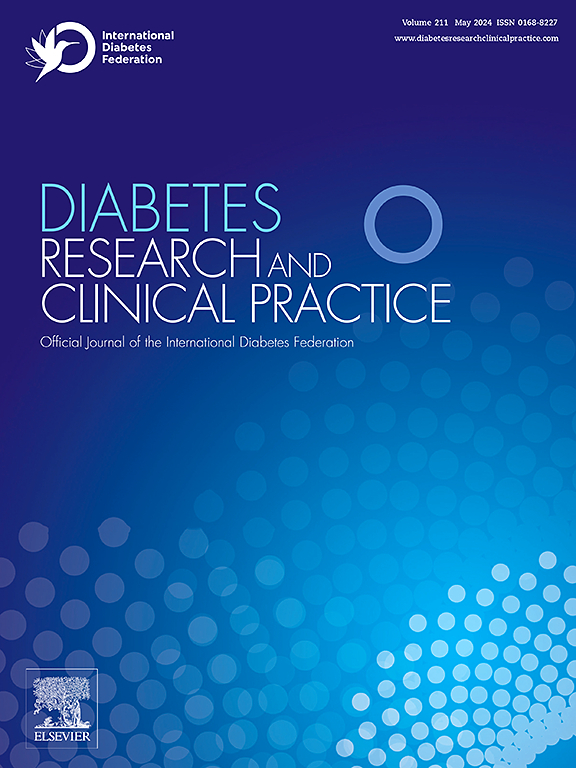Association between interleukin-6, suPAR, and hsCRP with subclinical left ventricular dysfunction in type 1 diabetes: The Thousand & 1 study
IF 6.1
3区 医学
Q1 ENDOCRINOLOGY & METABOLISM
引用次数: 0
Abstract
Aims
To investigate the association between chronic inflammation and subclinical left ventricular dysfunction in type 1 diabetes (T1D).
Methods
In a cross-sectional study of individuals with T1D without known heart disease, interleukin-6 (IL-6), soluble-urokinase-plasminogen-activator-receptor (suPAR), and high-sensitivity C-reactive-protein (hsCRP) were examined for associations with echocardiographic E/e′ (primary outcome) and global longitudinal strain (GLS) (secondary outcome). We adjusted for several clinical variables in linear regression analysis, including N-terminal pro–B-type natriuretic peptide (NT-proBNP). The biomarkers were categorized as elevated/non-elevated based on their upper quartiles.
Results
Of 962 individuals (52 % male, mean age 49 ± 14 years), mean E/e′ was 7 ± 3 and GLS 18 ± 3. In fully adjusted models, all biomarkers were each associated with increased E/e′: beta coefficients for IL-6 0.2 (95 % confidence intervals: 0.1–0.3, P = 0.001), suPAR 0.5 (0.1–0.7, P = 0.011), and hsCRP 0.1 (0.0–0.2, P = 0.023). Combining biomarkers showed stronger associations: elevated IL-6 and suPAR 1.3 (0.7–2.0, P < 0.001), elevated all three 1.9 (1.1–2.7, P < 0.001). Results were similar for decreased GLS with IL-6–0.4 (−0.7 to 0.0, P = 0.039), IL-6 and hsCRP −1.0 (−1.7 to −0.4, P = 0.007), all three −1.1 (−2.0 to −0.3, P = 0.009).
Conclusions
Inflammatory biomarkers are independently associated with subclinical left ventricular dysfunction. Chronic inflammation may contribute to the development of myocardial dysfunction in T1D.

求助全文
约1分钟内获得全文
求助全文
来源期刊

Diabetes research and clinical practice
医学-内分泌学与代谢
CiteScore
10.30
自引率
3.90%
发文量
862
审稿时长
32 days
期刊介绍:
Diabetes Research and Clinical Practice is an international journal for health-care providers and clinically oriented researchers that publishes high-quality original research articles and expert reviews in diabetes and related areas. The role of the journal is to provide a venue for dissemination of knowledge and discussion of topics related to diabetes clinical research and patient care. Topics of focus include translational science, genetics, immunology, nutrition, psychosocial research, epidemiology, prevention, socio-economic research, complications, new treatments, technologies and therapy.
 求助内容:
求助内容: 应助结果提醒方式:
应助结果提醒方式:


